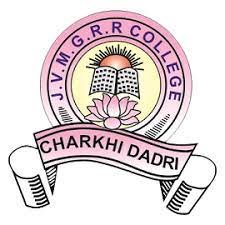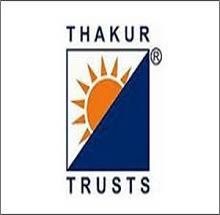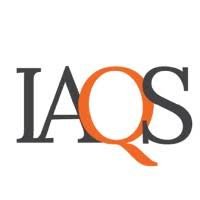Unlock the world of probabilities and finance by understanding the admission process for the Bachelor of Science (B.Sc.) in Actuarial Science, your gateway to a rewarding career as an actuary.
Admission Process for Bachelor of Science (B.Sc.) Actuarial Science Course
Actuarial Science is a specialized field that combines mathematics, statistics, finance, and economics to assess and manage risk for various industries, such as insurance, finance, and pensions. Pursuing a Bachelor of Science (B.Sc.) in Actuarial Science can lead to a promising career in risk management and financial analysis. If you're interested in this field, it's essential to understand the admission process for a B.Sc. in Actuarial Science program. In this comprehensive guide, we will provide a detailed overview of the typical admission process for such a program, covering each step and offering insights and tips to help you secure admission successfully.
1. Program Research and Selection: Before starting the admission process, research and identify institutions that offer a B.Sc. in Actuarial Science program. Look for universities or colleges with accredited mathematics or actuarial science departments, experienced faculty, comprehensive curricula, and a strong record of preparing students for actuarial exams. Consider factors such as program accreditation, internship opportunities, and the institution's reputation in the field of actuarial science.
2. Eligibility Criteria: The eligibility criteria for admission to a B.Sc. in Actuarial Science program may vary slightly from one institution to another. However, there are common requirements you can anticipate.
i) Educational Qualifications: Typically, candidates should have completed their higher secondary education or equivalent. A high school diploma or its equivalent with a satisfactory academic record in mathematics and related subjects is generally required.
ii) Mathematics Prerequisites: Given the mathematical nature of the program, candidates may need to have completed high school coursework in advanced mathematics, including calculus, statistics, and algebra.
3. Document Preparation: Preparing a strong application package is crucial for successful admission. Here are the essential documents you'll need to prepare.
i) High School Transcripts: Gather your high school transcripts, which should reflect your academic performance and relevant coursework in mathematics and related subjects.
ii) Application Form: Complete the application form provided by the institution offering the program. Ensure that you provide accurate and complete information.
iii) Personal Statement or Statement of Purpose (SOP): Write a well-crafted personal statement or SOP that outlines your passion for actuarial science, your career aspirations in this field, and why you're interested in pursuing this program.
iv) Letters of Recommendation: Some institutions may request letters of recommendation. These letters should ideally come from teachers, mentors, or professionals who can vouch for your strong analytical and mathematical skills.
4. Application Submission: Once you have prepared all the necessary documents and completed the application form, submit your application to the institution offering the program. Follow the specified submission guidelines, including deadlines and any specific instructions provided.
5. Application Fee: Some institutions may charge an application fee to process your application. The fee amount can vary, so make sure to inquire about this fee and make the necessary payments as instructed.
6. Entrance Examination (if required): In some cases, institutions may require candidates to take standardized tests or entrance examinations to assess their mathematical and analytical abilities. If such tests are required, prepare thoroughly by studying the recommended subjects and practising sample questions.
7. Admission Review: The admissions committee, consisting of faculty members and experts in actuarial science, will review your application package. They will consider various factors, including your academic qualifications, personal statement, letters of recommendation, and any entrance exam scores (if applicable).
8. Admission Decision: Once the admissions committee has reviewed all applications, you will receive notifications of your admission status. Typically, these notifications are sent via email or through the university's application portal. If accepted, you will receive formal admission letters outlining the next steps, including enrollment procedures and deadlines.
9. Financial Aid and Scholarships: Prospective students should explore financial aid and scholarship opportunities to support their education in actuarial science. Many universities offer scholarships, grants, or financial aid packages based on academic merit, potential for success in actuarial exams, financial need, or other criteria. Research and apply for these opportunities alongside the admission process to maximize your chances of receiving financial assistance.
10. Enrollment and Orientation: After being admitted, students must complete the enrollment and registration procedures outlined by the university. This includes submitting any required financial documents, confirming your intent to enrol, and selecting courses for your first semester. Participation in orientation sessions is crucial to familiarize yourself with the university, its resources, actuarial science faculty, and program expectations. It's also an excellent opportunity to connect with fellow students who share your passion for actuarial science.
11. Commencement of Classes and Actuarial Exam Preparation: The admission process culminates with the start of classes in actuarial science. Students begin their coursework, which includes advanced mathematics, statistics, finance, and economics. Additionally, students often embark on a path to prepare for actuarial exams administered by professional actuarial organizations. These exams are a crucial part of becoming a certified actuary and are typically taken while completing the B.Sc. program.
12. Successful Completion and Graduation: To earn your B.Sc. in Actuarial Science, you will need to successfully complete all required coursework, actuarial exam requirements, assessments, and any research projects as specified by the program. After successfully meeting all program requirements, you will graduate with your degree and be well-prepared to pursue a rewarding career in actuarial science.
 3 Years
3 Years
 Under Graduate
Under Graduate
 Science
Science
 Full Time
Full Time











 back
back